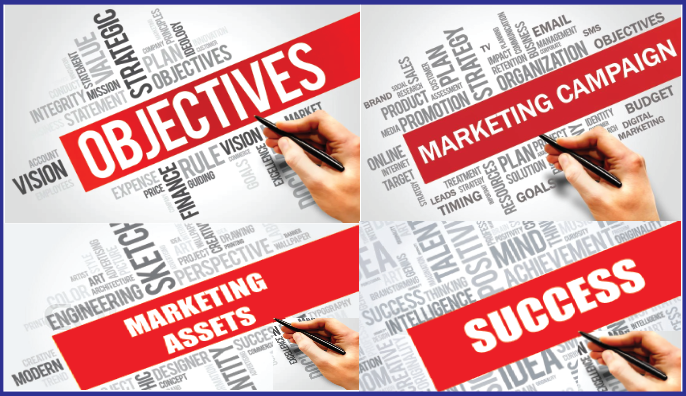Are These 7 Tools in Your Sales Tool Box?
June 17, 2025
#1. Mobile Application Development: We all know that communications are becoming more and more mobile as savvy business people create apps that create value for their customers-often in surprising, and practical, ways. In sales, for example, that can simply mean saving time. Have you considered building an app that would create value for your customers and prospects and that would help you differentiate from competition?
One of my favorite apps is called Waze. It frequently helps me avoid delays due to traffic or construction on my way to appointments or meetings. It’s a mobile, “community-based” application that communicates real-time information among drivers on the road when you are. And, like many of today’s helpful applications, it’s free.
“Brands which are able to push more and more interactions to digital will become more valuable in the networked product age,” says Michael Lavista, CEO of Caxy Code Creative. “Further, the brand that can come up with new digital experiences stands the most to gain against its competitors.” We can set up a meeting that could help you brainstorm how to do this for your business.
Another one I like is SpotHero. It provides a choice of parking spaces available near your destination and posts the prices. Grab a space in a garage next door if you’re in a hurry or find the least expensive reasonably priced space in the area if you’re not. Sometimes you find both in the same space. It’s not unusual for me to save 20 percent in Chicago’s Loop area, where I often travel, and sometimes up to half.
#2. Consultative Selling Skills: This tool offers many benefits. It can be used to narrow the gap between your top producers who produce 70 to 80 percent of new business and the rest of the team, which produces only 20 to 30 percent of new business. It’s like using a crow bar in a velvet glove to leverage the less productive group to better performance and help the top group to be even better. This tool also speeds up the sales cycle, increases the win rate, protects your intellectual property, and reduces discounts and short-pay allowances.
Why do true consultative selling skills in business-to-business work when a traditional transactional approach does not? Essentially, effective consulting selling is persuasive instead of educational. It’s not enough to tell prospects about all the bells and whistles your products offer. You must persuade them that your products are beneficial for their specific businesses. That requires dialogue that goes beyond asking questions that find the “pain.” It’s dialogue that helps prospects work through the challenges they face and appreciate the full value of what your product can mean for their profits. Our consultative selling course, FOCIS, in fact, has been helping companies and professional services firms develop those skills for twenty years. Give us a call and we’ll help you understand its value to your company.
3. Multi-Floor Elevator Speech: Most people think of the elevator speech, or “pitch,” as being brief because it must be said in the time it takes for an elevator ride. On the theory that elevator rides actually vary in how much time they take, we’ve developed our “multi-floor” elevator speech tool that allows you to say more (or less) depending on how much time you actually have. And, of course, you don’t have to be in an elevator to benefit from this new twist. It will prepare you for any networking event or conference where people will want to know what you do.
Get in touch with us and we’ll be happy to send you the “multi-floor” elevator speech tool right away.
4. Credit Insurance: Have you ever “no quoted” an inquiry from a company with doubtful credit, or quoted above market price to compensate for the incremental risk?
While both of those strategies will lower the risk of loss, they may not be the most productive overall. For one thing, higher pricing can mean the cost of losing that business as well as the opportunity cost of future business. The “Credit Insurance Tool,” which is underutilized or not utilized at all, helps in two ways.
- It allows you to shift the credit risk to a third party for a relatively small premium. Is reducing that risk worth the cost? It might well be in that it could help secure a large account you might pass up or lose to competition because of your risk-reducing markup.
- The firm you use becomes your partner in the credit process. Established firms have the most up-to-date information about the risks. Practices vary but firms will generally pay you first in the case of loss and take responsibility for collection.
“A benefit that’s sometimes overlooked,” explains Euler Hermes’ Lee Fahrenz of the 120-year-old firm’s Midwest office, “is that insured receivables are secure collateral that can help in obtaining more working capital.”
5. Productive Referrals Skills: Are you or your team unsure of the “who, what, when, and how” of asking for referrals and of building the number and quality? You’re not alone, even though most business-to-business lead generation comes from referrals, perhaps as much as 70 to 80 percent. Yet too many salespeople and others with full or partial business development responsibility receive little or no training on the most effective ways to inspire referrals. And, yes, “inspire” is the right word here because referrals rarely just happen. Simply asking as many people as you can wherever and whenever you can is almost never efficient in business to business and can even backfire.
No, productive referrals are the result of identifying and nurturing the right referral sources, sometimes known as centers of influence (COIs), and effectively communicating the value of your work to them and others at networking events, industry functions, or even school events. It’s also important to keep your name top of mind with a nurture marketing program that delivers true value , not promotion disguised as value.
Our four-hour course can provide the answers and put you on the right path to using the “Referral Tool” profitably.
6. Today’s “New” Negotiation Approach: Sharpening sales negotiating skills is another way to increase the topline. Smart companies, however, go beyond providing negotiations training for salespeople focused only on persuading the purchasing departments at their customers’ or prospects’ companies. They realize that others who represent their company also face negotiations.
Quality, engineering, logistics, and other departments must negotiate adjustments, accommodations, or limits with their counterparts at companies they’re doing business with or hope to do business with. Internal negotiations also impact an enterprise. Since as human beings we have all been negotiating our entire lives, we generally think we’re good at it. Like anything else, however, training and learning best practices can sharpen the ax. And from time to time best practices take new tacks.
Although traditional negotiation tactics and strategies are still firmly in play, for instance, face-to-face behaviors have changed based on research that shows the “new” negotiation to be more consultative in nature and more effective. Assuming comparable skill levels, the “cooperative problem-solving” style is more effective than the “competitive adversarial” style.
Our “Negotiation Today” course is designed to support your team’s efforts throughout the sales process and in other ways as well.
7. Marketing Research: Consumer products companies have always invested heavily in market research. But industrial firms selling to other businesses have done far less. And that’s too bad. In B2B, relatively small investments can go a long way toward gaining a deeper understanding of customer buying motives, behaviors, and other issues. While such insights alone don’t solve problems, they can help guide your decision-making.
“Unfortunately, most B2B companies think that custom research costs too much. That’s simply not true,” explains Brian Arnold, principal of Clear Point Research Group and the author of the Custom Market Research Guide. “A good research partner will work with you on a budget you can afford.”
If you have an interest in learning more about any of these tools please contact us at 847-446-0008 Ext. 1 or pkrone@productivestrategies.com. We offer many of the services described above. For those that are outside of our scope we can direct you to very qualified potential suppliers.
The post Are These 7 Tools in Your Sales Tool Box? appeared first on Productive Strategies, Inc..










